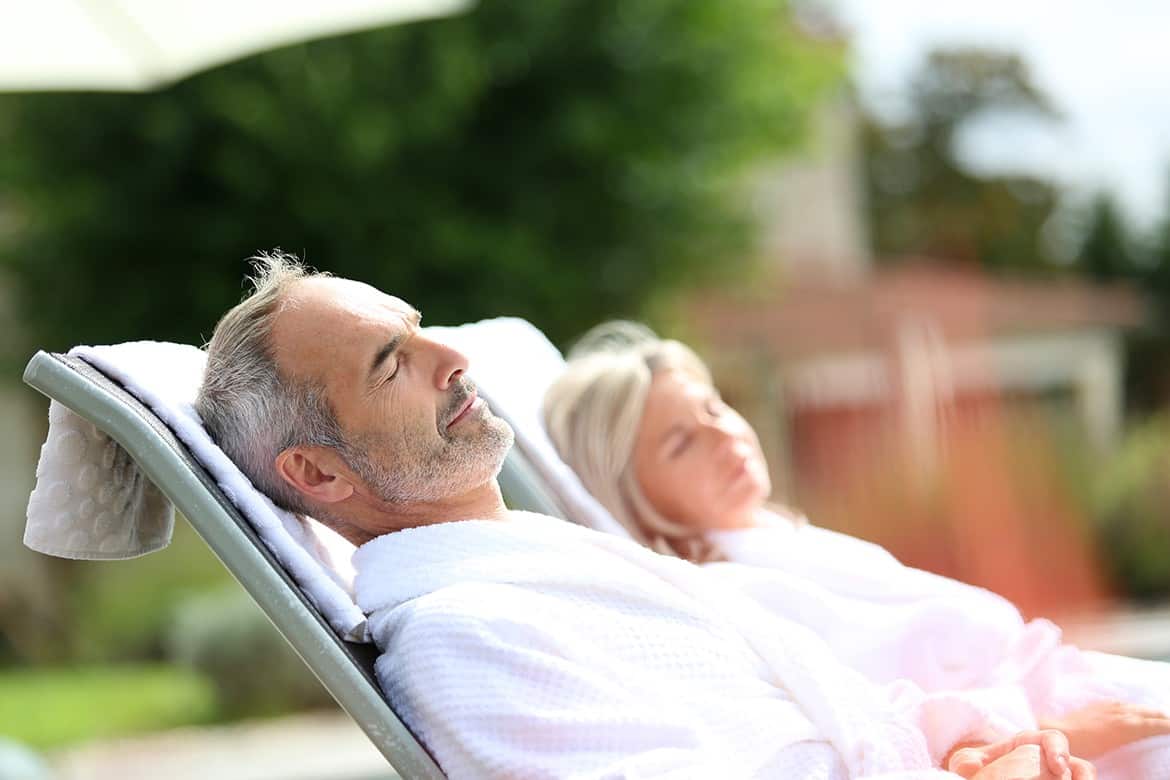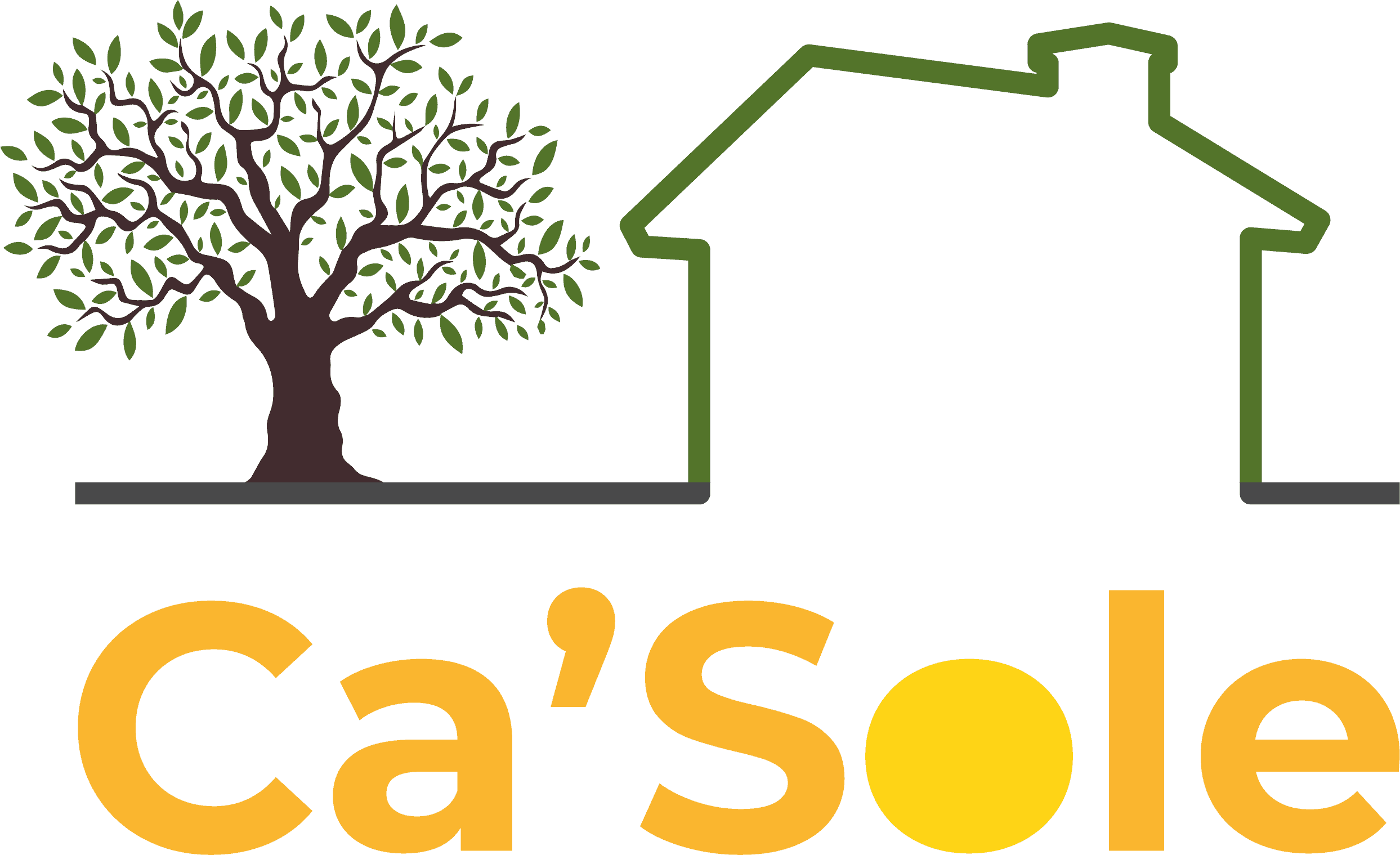Every year, about 600,000 people visit one of the 109 French thermal baths. Most of them are elderly people: the average age of these spa visitors is 65.
Rheumatism, respiratory ailments, neurology… Thermal cures help in the treatment of 12 major health areas. Baths and treatments rather than antidepressants. A study published in 2006 had put thermalism back at the heart of mental health therapies.
This is hardly surprising, as thermalism is particularly recommended for long stays (the Health Insurance covers them for stays of 18 days minimum), and to treat ailments often linked to age, rheumatism in particular.
Thermalism is based on the use of the virtues of water from certain mineral springs for therapeutic purposes. In France, the Académie de Médecine recognises the therapeutic benefits of more than 1,200 thermal springs throughout the country. The thermal cure is a medical treatment dating back to antiquity, but which is still practiced today because of its exceptional effectiveness. Passed on, enriched, revisited and perfected, the spa treatment is now used by various people, particularly the elderly, to benefit from its many advantages.
As a thermal spring is totally composed of natural elements, it only produces beneficial effects on the health of seniors and elderly people, avoiding the use of chemical treatments.
Of course, health is the sinews of war, but why not add pleasure to it? This is what the thermal waters offer. Services such as board games, retrospectives, animation workshops and other group classes of soft gymnastics are included in the medical care. Depending on the budget, courses in sophrology, music therapy, musical relaxation in the thermal pool, qi gong and more are also offered. These establishments “fill up” every season. Opened as soon as the fine weather arrives, it is a form of holiday that is offered to the elderly. Fun activities are on the agenda, but not only… Often, relaxing interludes are provided, such as facial modelling, various massages such as palpate-roll or Ayurvedic, endermology to firm up the skin tissues, as well as “spa packages”.
What treatments are provided during a spa cure
Thermal waters are used in various ways, they can be: ingested directly by the patient in internal hydrotherapy. These are the thermal inhalation therapies: nebulisations, inhalations, aerosols, nasal irrigations and micronised showers.
In external hydrotherapy: showers, baths, application of mud, massage under thermal water or sprays…
All of these techniques, which are rarely used during the year, are becoming widely popular with spa users. More targeted baths in reduced weightlessness, under continuous pasteurisation, with mud cataplasms are also proposed for those whose disorders are related to rheumatology.
When should a spa treatment be considered?
Thermal cures are often prescribed to seniors as a complement to the medical treatment of a serious pathology, often a long-term illness (ALD). In some rare cases, however, they may be recommended as the main treatment.
There are 12 main medical fields (the Health Insurance speaks of therapeutic orientations) for which thermalism is considered beneficial (and therefore covered by the Social Security): rheumatology, respiratory tract diseases, cardiovascular diseases, phlebology, neurology, gynaecology, psychosomatic diseases, digestive and metabolic diseases, dermatology, urinary diseases, developmental disorders in children and diseases of the oral mucosa.
Better still, for obese or overweight patients, the effectiveness of thermalism is fully recognised. Other illnesses such as diabetes, chronic lumbago, chronic dermatitis, fibromyalgia, digestive disorders, cardio-arterial diseases, oral-lingual affections, gynaecological disorders, can be treated in a spa cure. Thermalism is also an effective technique for post-traumatic or post-operative treatment and offers considerable interest in functional rehabilitation.
In addition, thermalism can just as well assume another role than therapeutic. It can indeed be used simply for relaxation and fitness of the elderly. The high concentration of minerals in a thermal spring combined with the heat is a powerful antidepressant and effectively combats stress.
How to choose a thermal spa ?
Thermal waters, which are more or less ferruginous and mineralised depending on their source of origin, can be rich in bicarbonate, sulphate, sulphide or chloride. Each thermal spring therefore has its own particular properties, which are used for specific purposes.
It is important to note that each spring has a different composition and depending on the constituent present in the majority of the water, it may be recommended for a specific pathology. From a global point of view, the stations specialised in the treatment of rheumatology are the most numerous and the easiest to find on the French territory. They can be found in Midi-Pyrénées, Auvergne, Aquitaine, Lorraine, Basse-Normandie, Rhône-Alpes (rheumatism, rheumatology, urinary tract, respiratory tract, metabolic diseases and digestive tract diseases), Languedoc-Roussillon (rheumatology and respiratory tract), Champagne-Ardenne, Provence-Alpes-Côte d’Azur, Burgundy, etc.
Thus, the choice of the care establishment and consequently the associated thermal spring, must be carried out according to the pathology to be treated. For example:
Waters rich in sulphur are recommended for respiratory ailments,
Sulphated waters (rich in sulphur) for skin problems, suitable for treating certain renal or metabolic disorders, as well as eczema or the after-effects of burns.
Bicarbonate waters are indicated for digestive disorders…
 Traditional treatments such as Qi gong
Traditional treatments such as Qi gong
Combining the benefits of heated seawater with massages and treatments, the anti-stress cures “Health in balance”, “Energy reconnection” or “Balance-vitality-immunity” are multiplying. Many institutes combine traditional treatments with sophrology, meditation, pilates, Watsu, acupuncture or Qi gong.
The treatments are grouped together over half a day, leaving time to walk around the thalasso and enjoy the beneficial effects of the pure sea air. For those who have not been able to go on a cure in the last two years, it is urgent to get back to good habits. To this end, many spas offer to combine the conventional 18-day cure with a wellness cure programme aimed at relieving stress and anxiety, relearning how to breathe, improving the quality of sleep and getting back into shape.
Whether in the mountains with the benefits of the mineral-rich fresh water of thermalism or by the sea with the heated salt water of thalassotherapy, balneotherapy adapts its offer to the post-pandemic period.
How do the benefits of a cure manifest themselves?
The benefits of a spa treatment can be appreciated over the long term. Numerous studies have demonstrated their effectiveness and their capacity to relieve chronic ailments in an effective manner.
These benefits are also manifested on a psychological level. The cures are a real break from everyday life. They allow patients to benefit from a great deal of advice, to adopt good habits and to relax between treatment sessions.
10 million French people are affected by osteoarthritis, including 65% of those over 65 and 80% of those over 80. Many of them come to find an answer in thermal medicine: 79% of those taking the waters have a prescription with rheumatology as their main orientation. Indeed, heat has a sedative and relaxing effect which, associated with hydrostatic pressure, relieves pain and strengthens muscle and joint tone. The ThermArthorse study, which compares patients who have undergone standard treatments, bears witness to this. The result: 50.8% of the patients who underwent a cure achieved a significant improvement and the reduction in pain after 9 months was 3 times greater in the group that underwent a cure than in the control group. Leaving the pain/analgesic treatment cycle allows patients to regain mobility and physical activity, with a reduction in their consumption of non-steroidal anti-inflammatory drugs, clinical procedures, imaging, etc. in the months that follow.
Balance problems, reduced bone density, vitamin D deficiency, osteoporosis or muscle loss are factors that can increase the risk of falls or their severity. In the long term, they can plunge patients into a vicious circle that increases their frailty, exposes them to loss of autonomy and reduces their social ties. Thermal cures, carried out regularly, help to strengthen bone mass and maintain balance. It has been found that people who have undergone about ten cures for osteoarthritis, based on baths and the application of mud, have a greater bone mass than those who have undergone between 3 and 10. Other studies have established the benefits of crenotherapy on the balance of elderly people.
The treatment is combined with an exercise programme and outdoor activities which, when continued at home, enable the patient to resume physical activity, often more intensively. These activities have an effect on respiratory endurance, maintenance of muscle mass and on depression and cognitive functions. The TCAP study shows a significant increase in the level of physical activity in elderly people one year after the treatment.
The consumption of medication is also one of the issues related to ageing. The cost of treating chronic pain is more than 100 billion euros for the health insurance system and older people are particularly affected by multiple medication. On average, 14 different drugs are taken continuously by this population. These include psychotropic drugs, antidiabetics and hypertensives. The duration of the spa treatment and the improvement in pain can have an impact on the patient’s consumption of medication. The SPECTh study (psycho-educational withdrawal from spa treatments) highlights this effect with regard to benzodiazepine dependence. It shows that 80% of the patients studied reduced their consumption by half during the cure and 41% stopped using benzodiazepines completely 6 months after the cure.
Bibliography :
Capgeris, “Les bienfaits des cures thermales pour les seniors et personnes âgées », Capgeris, 2 Avril 2015. https://www.capgeris.com/station-thermale-agreee-1492/les-bienfaits-des-cures-thermales-pour-les-seniors-et-personnes-agees-a34799.htm
Essentiel autonomie, « Thermalisme : quels sont les bienfaits des cures thermales pour les seniors ? », Essentiel autonomie, 21 Octobre 2021. https://www.essentiel-autonomie.com/prendre-soin-moi/thermalisme-quels-sont-bienfaits-cures-thermales-seniors
Philippe Serieys, « Les nouveaux seniors. Thermalisme et thalassothérapie, les bienfaits de la balnéothérapie », Ouest France, 12 Février 2022. https://www.ouest-france.fr/societe/seniors/les-nouveaux-seniors-thermalismeet-thalassotherapie-les-bienfaitsde-la-balneotherapie-69529a1a-82a1-11ec-9ba3-2e77758d00f9
Sejour Senior, « Cure thermale pour seniors et personnes âgées », Sejour senior. https://www.sejoursenior.com/cure-thermale-seniors-personnes-agees/

